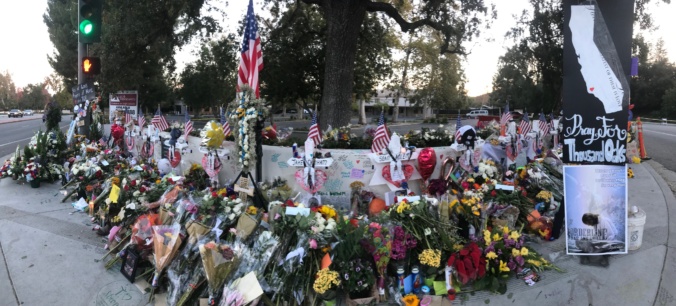Today is the one-year anniversary of the Borderline Bar and Grill mass shooting incident that occurred in Thousand Oaks in Ventura County, California. With so many of these types of incidents occurring each year in the U.S., you might not recall the details of this particular one. A gunman (young male ex-Marine) entered the popular line dancing / country music establishment just before midnight on college night. He shot staff members, then opened fire on the patrons as they fled, many jumping from second story windows to escape. Two officers made entry and engaged in a shootout with the suspect, Ventura County Sergeant Ron Helus was fatally wounded. The gunman killed himself before authorities attempted a second entry. A total of 12 innocent lives, mostly college students, were taken that night. The incident hit Thousand Oaks hard and the community was still reeling from the tragedy when many residents were forced to evacuate from the Woolsey Fire less than 24 hours later.
This was also the first (and currently the only) mass shooting incident that I ever responded to. As I listen to the news broadcasts about the community healing events and the dedication of the Ron Helus memorial highway today I am remembering how this tragedy impacted me personally and what elements made this response unique among all the natural hazards induced disasters that I’ve responded to. At the time, I hadn’t yet found out I was pregnant with Scarlett. So much has changed in this year and it’s given me the clarity to reflect honestly on what was the craziest day in my emergency response career so far, and how responding to this man made disaster was different in many ways than responding to nature induced disasters.
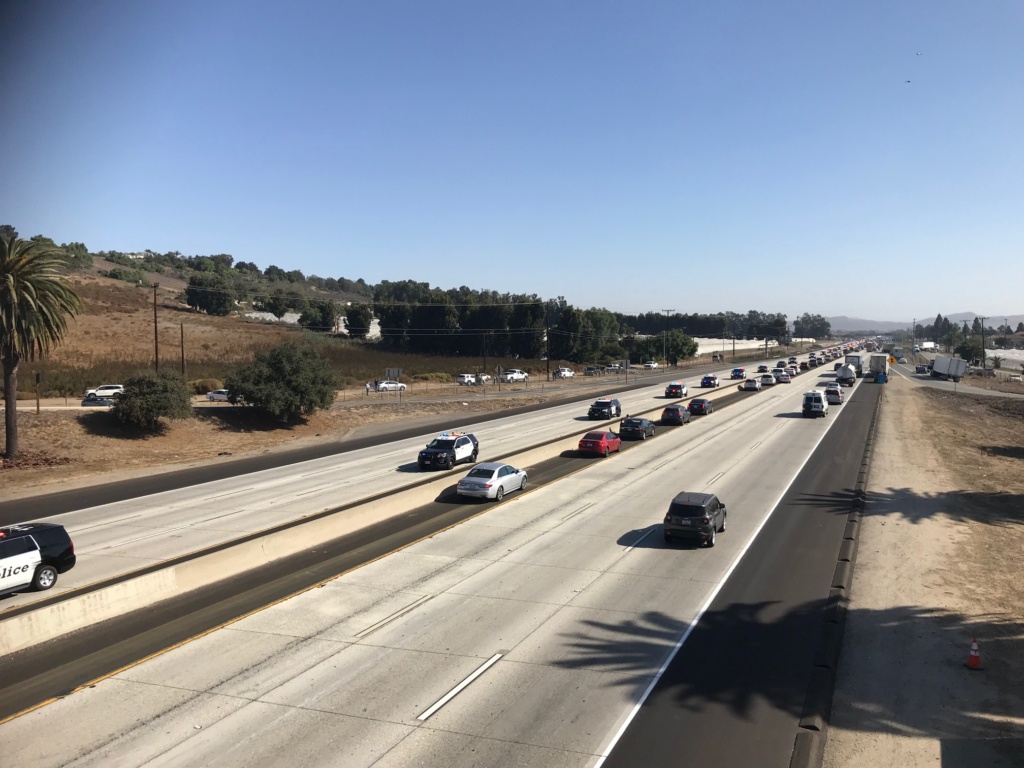
A Different Rhythm
Unlike the frequent wildfire / hurricane / storm responses that we emergency managers are used to dealing with mass shootings are quick. For ‘natural’ disasters we usually have days to ramp up our response as weather predictions show us when the danger is likely to occur to our communities. The response period is prolonged as we issue evacuations and then monitor sheltering and impacts with our EOC’s active for several days or weeks until the threat has passed. With mass shootings, nearly 70% end in less than 5 minutes. Of course, we are still in response mode while first responders arrive and establish command on the scene. But the incident very quickly enters the recovery phrase, the threat has passed in the blink of an eye and as emergency managers our role is entirely to deal with the aftermath. Your EOC does not need a position dedicated to advanced planning, weather monitoring or predictive services on fire behavior. These incidents are extremely hot and heavy—they come on quickly with intensity and are almost always totally unexpected. The good news is that your EOC activation will not last long, the bad news is that you will immediately have fatalities and that always ups the ante on any response.
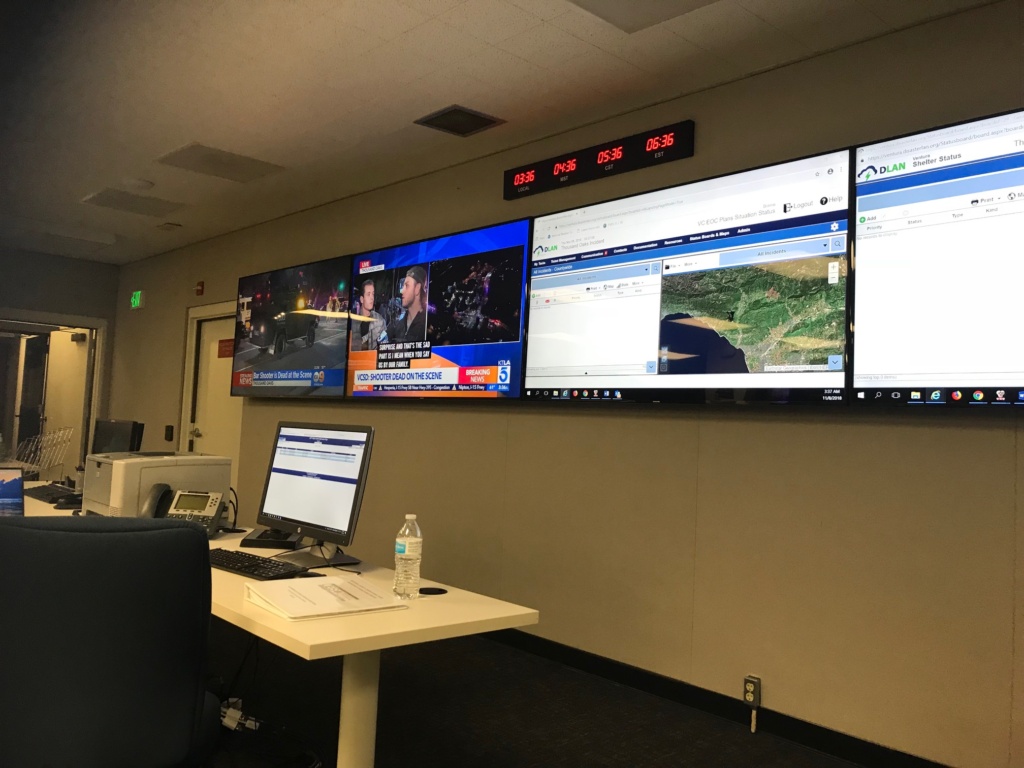
Criminal Investigations
Because you already have fatalities and these were no accidental deaths, your coordination will have to work around a criminal investigation of the incident. That does mean that your incident command post will need to be organized to endure for a much longer duration than law enforcement led incidents usually do. There will be new partners descending on the scene to fill their roles and your agency may have never worked with them before. One of the most critical being the Federal Bureau of Investigations (FBI) and their Victim Services Division. Your state may also have a victim services branch that will want to be involved in the response. This means that your field staff will almost certainly be seeing a lot of new faces at the ICP, but if you have taken the time to plan and train in advance they should at least be aware of the support these agencies can offer and what their processes are like. Be aware that victim identification may take longer than it would for a single shooting or for a nature induced incident because of the ongoing criminal investigation and the involvement of the FBI as they determine whether the incident will be categorized as terrorism.

The Role of Emergency Managers
The most important role that emergency managers should own in these incidents is to coordinate a Family Assistance / Reunification Center. I prefer the terminology ‘Assistance’ Center since inherently some will not be reunified with loved ones and the usage of this word can bring unnecessary additional grief to the families of the deceased. At the Ventura County EOC supporting the logistics of both the Incident Command Post and the Family Assistance Center quickly became our primary focus. The ICP will need things like lighting, barricades, and additional security measures to protect the responders from the public due to the sensitive nature of the response. The Family Assistance Center will need a location, and agency representatives who can assist families including behavioral health staff, chaplains, the American Red Cross and any other local NGO’s who can offer support, and law enforcement representatives to provide and collect information. Both locations will need basic items like tables and chairs and it helps to create a comforting environment to be able to provide things like tissue, snacks, and coffee at the Family Assistance Center. It’s ideal to get this going very quickly to alleviate the pressure on the ICP as family members and media will be drawn to the scene of the crime. If you have a FAC plan in place with locations and agency contacts predetermined it will certainly expedite the process. Remember that this could happen in the middle of the night, as it did in Thousand Oaks, so having 24-hour points of contact for facilities and agencies is ideal.
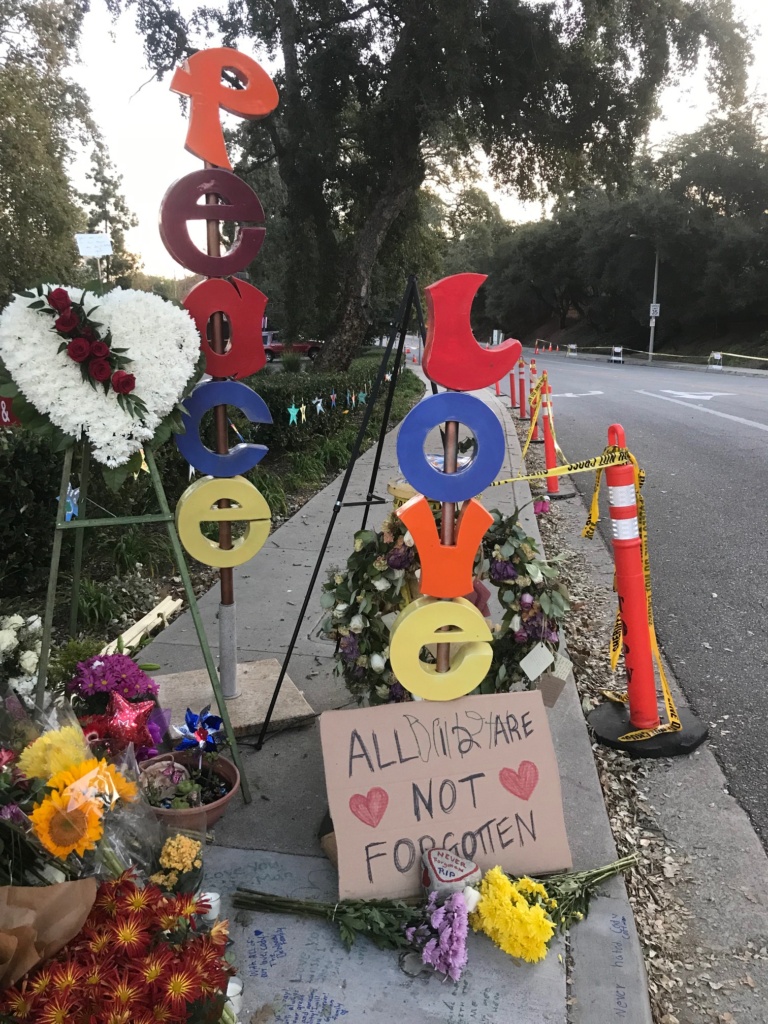
Gun Control Politics
Your jurisdiction will quickly become the focus of national and international news attention. You shouldn’t be surprised if you’re trending on Twitter very quickly and ‘your town + strong’ becomes a popular hashtag. People are shocked and horrified by mass shootings, and the attention will be immediate and intensely laser focused on the incident. Although natural disasters may cause more physical destruction and also take lives, mass shootings are seen as more preventable and the brutal intentionality of these incidents draws the attention of the nation, if not the world. During the Borderline incident, we were shocked to receive an interview request in Hebrew from a news outlet in Israel. When planning for mass shootings, the importance of effective public information cannot be overstated. You must have your best PIOs available both at the ICP and in the EOC to disseminate accurate information, showcase what your agency is doing to respond, and to convey compassion. You will also find yourself thrown unwillingly into the national gun debate immediately and both elected officials and PIOs should be equipped to respond appropriately to heavily political questions they may receive. I highly recommend testing public information as a core capability during mass shooting exercises as it can become overwhelming quickly and commanding messaging with clarity and dignity is critical in how your response and your community will be portrayed and remembered in the international eye.

Emotional Nature
The absolute most important element of a mass shooting response in contrast to a natural hazard incident is the intensity of the emotions involved. Be prepared for an extremely somber atmosphere, your EOC will feel very different than it does during routine weather events. While your EOC staff will be working very hard to fulfill their roles, they will also be very distraught, saddened, and scared that such a horrific tragedy has occurred in their community. In Ventura, everyone knew Sgt Helus, he had trained with the EOC team and had been involved in the Thomas Fire response the previous year. So while the team was working hard intellectually to deal with an unprecedented type of response, they were also working extremely hard emotionally to process that a colleague had been murdered. In the December 2015 San Bernardino terrorist attack, the victims included many county staff who were attacked during a holiday luncheon. These incidents often hit very close to home for those of us involved in the response and can have ramifications for continuity of operations as well. When everyone on the team is devastated by the deaths of colleagues or if some of the victims include the team members, how can you continue to respond and provide services to the community? While it’s a very delicate subject and nearly impossible to fully prepare for, I recommend that these personal elements be tested and discussed during any emergency exercises with mass shooting scenarios. And if you are responding to an EOC for a mass shooting as an outside agency representative, remember that this is deeply personal. While you may have dealt with loss of life during a disaster before, as we had recently in the Montecito mudslides incident, this was different, this was intentional murder. Take off your vest for a moment and remember that you are all human beings and the most important thing is to recognize and honor the humanity of those responding beside you. They are dealing with loss while still performing their duties and they can use your personal support. The night that I responded to Borderline, I wore my Ventura OES polo instead of my CalOES one (against protocol). I hoped this small, non-verbal gesture would show them that on that night I responded as one of them. I greeted each of the team members with compassion, looking into their eyes and telling each that I was sorry for their loss, as I realized these were not simply my colleagues they were my friends. I came that night not just as a state employee supporting local government, but as a human being honoring their organization and giving all of myself to the team however I could.
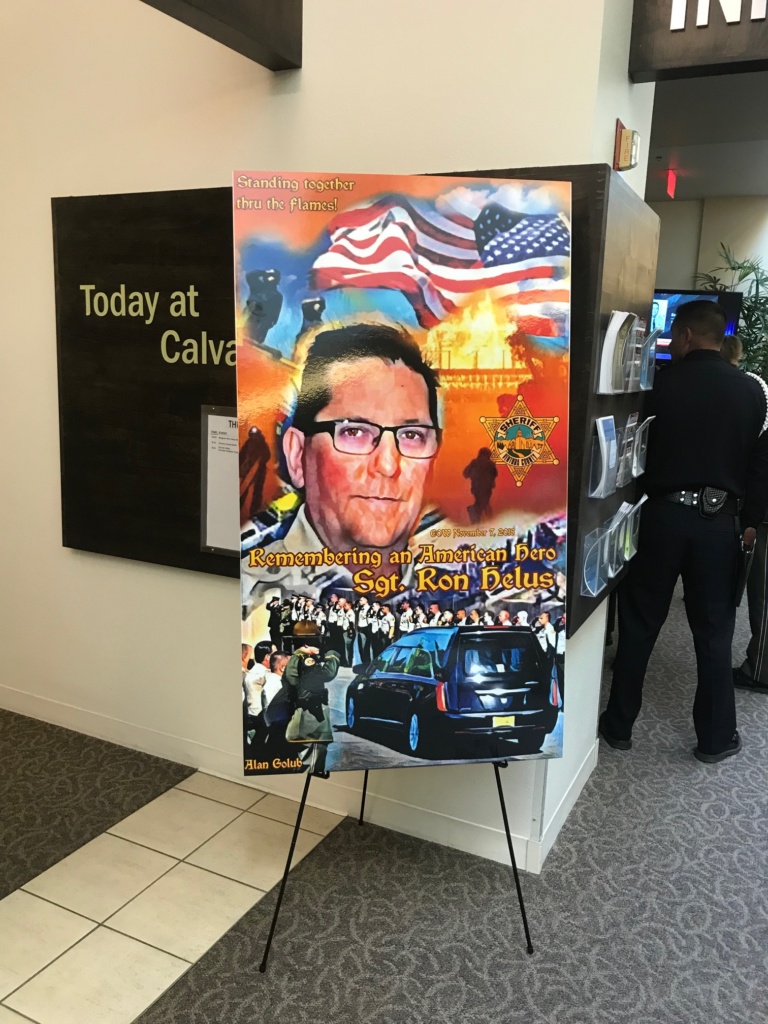
In Remembrance
Today, I honor the memory of those innocent lives that were taken too soon a year ago and particularly the heroism of Ron Helus, who died trying to stop additional murders in his hometown. The community of Thousand Oaks has been through a tremendous amount of adversity in the past year and it’s been my honor to support them as a state liaison. It’s important to remember that while these incidents will be ‘over’ quickly, the healing and recovery process will take years. Thousand Oaks has responded with some innovative outlets for community healing, including a writing project and a community healing garden. In remembrance of this tragedy, take some time today to think about your own plans for an active shooter and what you can add or exercise next to remain vigilant to the nuances of these man made incidents.
